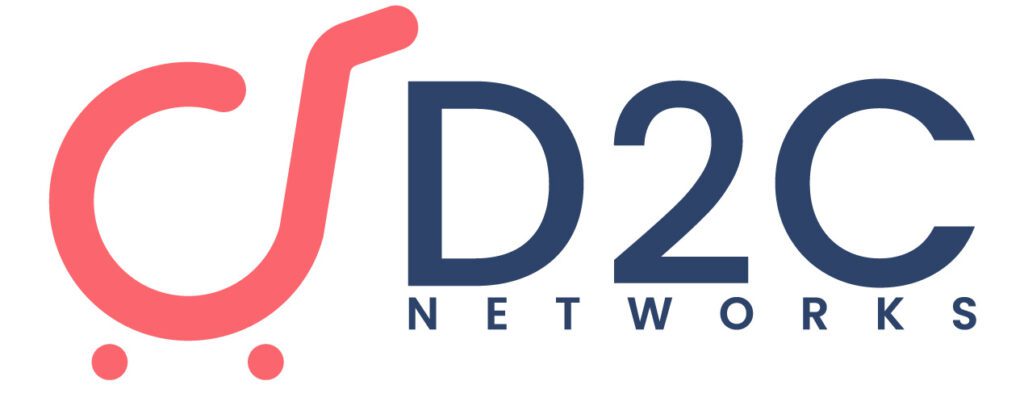
Table of Contents
Top 6 Benefits of Adopting a Direct-to-Consumer Model for Your Brand
The business world is changing, and businesses are always searching for creative means of directly interacting with their consumers. The Direct-to-Consumer (D2C) approach is among the most successful tactics altering the market now. From USD 70 billion in 2024, India’s D2C e-commerce market is predicted to grow 25% to USD 270 billion by 2029. Regardless of your level of entrepreneurship or the size of your established firm, adopting a D2C business model can transform your business.
This blog investigates the D2C model advantages, how they differ from conventional B2C, and the reasons companies of all kinds are moving to this approach.
What is the Direct-to-Consumer (D2C) Model?

Bypassing middlemen like wholesalers or stores, brands selling their items directly to consumers via their own platforms—such as websites, apps, or specialized physical storefronts—are referred to as direct-to-consumer models.
D2C lets companies own the whole sales process, unlike the B2C vs. D2C arrangement whereby B2C depends on department stores or outside platforms like Amazon.
For instance, using the D2C strategy, Nike sells directly through its website and exclusive stores while still being accessible in outside third-party outlets. This hybrid approach emphasizes for brand control the strength of direct-to-customer sales.
Discover more about D2C terminology in our glossary here!
Top 6 Benefits Of The Direct-To-Consumer Model

1. Better Profit Margins
Rising profitability is one of the most important D2C model advantages. Eliminating middlemen can help companies reduce retail, logistics, and commission expenses. Following the direct-to-customer sales strategy, 40% of world brands observed a 20% increase in earnings.
Let’s take one real-life example: By direct client sales over six years, Casper, the mattress manufacturer, brought in over $400 million in yearly income.
2. Better Customer Engagement
The D2C business model helps companies to communicate directly with consumers, therefore generating individual experiences. Using consumer behavior insights helps companies to better know their wants.
According to PwC’s research, 73% of consumers choose brands with tailored shopping experiences. Why? Because improved customer engagement in D2C promotes loyalty, trust, and retention rates, by means of which it shapes behavior.
3. Complete Control of Brand
Traditionally in retail, brands show, price, and sell their products using outside channels. This can weaken the brand identification. D2C companies using a digital-first strategy may entirely control their story, price, and customer support.
For example, Apple’s D2C e-commerce policies guarantee that every good and service complements its premium brand image.
4. Quick, Data-Based Choices
Direct customer sales give access to rich consumer data, which helps companies make wiser decisions. McKinsey reports that businesses that use first-party data for tailored marketing have a 10–20% revenue growth. So, brands may test new goods, rapidly adjust to trends, and hone their strategy using this data.
5. Internet Shopping's Convenience
Unmatched online shopping benefits come from the D2C paradigm. Consumers may order with a click, peruse items around the clock, and get doorstep delivery. For a fact, with a sizable portion coming from D2C firms, e-commerce is predicted to reach $7.4 trillion worldwide by 2025 (Statista).
6. Cultivating Brand Loyalty
Direct involvement creates meaningful ties that help companies in brand loyalty building. Among the tools D2C makes use of are loyalty programs, exclusive discounts, and open communication. You can check the loyalty program of Glossier; it has produced 70% of its sales from returning customers.
Let’s further explore how the D2C business model is a success for business using the right strategy!
How D2C Differs From B2C: Principal Points
FEATURE | D2C | B2C |
SALES CHANNEL | Brand’s own website/store | Third-party platforms |
CUSTOMER DATA | Fully owned by the brand | Shared with retailers |
PROFIT MARGINS | Higher | Lower (due to middlemen) |
CONTROL | Complete | Partial |
This comparison clarifies why companies seeking control and expansion would find the D2C business model more appropriate.
Using a D2C Model for Your Success
- Create a Strong Digital-First Strategy
Create an easily navigable online store using e-commerce tools like Shopify or WooCommerce.
To improve the consumer experience, concentrate on e-commerce tactics that include rapid checkout and mobile optimization. - Make Personalized Marketing Investments
Use consumer behavior information to guide your email and advertising efforts. There are tools available to aid, like Google Analytics and HubSpot. Personalized emails ( Experian) show 6 times better transaction rates. - Foster Openness and Trust
Tell people straightforwardly about policies, delivery times, and price points.
Provide excellent post-purchase assistance to enhance customer relationships in D2C. - Test and See
Apply A/B testing on everything from new product introductions to website design. Companies that test constantly raise their conversion rates—up to 40%—by means of optimization.
Case Studies of Success D2C in Motion
Warby Parker
Sold straight to consumers, therefore upsetting the eyeglass business.
Profitability with the D2C approach helped it to reach $540 million in 2022.Allbirds
Concentrating on premium, environmentally friendly shoes by using its direct-to-customer sales strategy, it attained a 30% yearly growth rate.
Want more information about the direct-to-consumer model, success tactics, and e-commerce trends?
Join the D2C Networks Community now; subscribe to our newsletter for special materials and advice sent right to your email.
Sign up here.
Frequently Asked Questions
- B2C and D2C differ in what exactly?
While D2C cuts out middlemen so brands may sell straight, B2C is selling goods to consumers through middlemen. - Why is the D2C model so much sought after?Greater earnings, improved consumer involvement, and complete control over branding and sales are among the D2C model’s advantages.
- How might I launch a D2C company?
- Create an online store on Shopify, among other tools.
- Invest in marketing tools to get to your intended market.
- Customize your offers using client information.
- B2C and D2C differ in what exactly?
While D2C cuts out middlemen so brands may sell straight, B2C is selling goods to consumers through middlemen. - Why is the D2C model so much sought after?Greater earnings, improved consumer involvement, and complete control over branding and sales are among the D2C model’s advantages.
- How might I launch a D2C company?
• Create an online store on Shopify, among other tools.
• Invest in marketing tools to get to your intended market.
• Customize your offers using client information. - Does D2C make money?
Yes! Usually with savings on retail fees and delivery costs, D2C companies have more profit margins than conventional retail models.
- What difficulties does D2C present?
D2C calls for expenditure in digital marketing, customer service, and logistics. Still, with the correct approach, these difficulties can be surmounted.
Share This Post on
Table of Contents
Find Verified D2C

Suppliers
Connect with the Right Partners for Your D2C Brand.
Find Suppliers Now
100% Verified, Seamless Process



